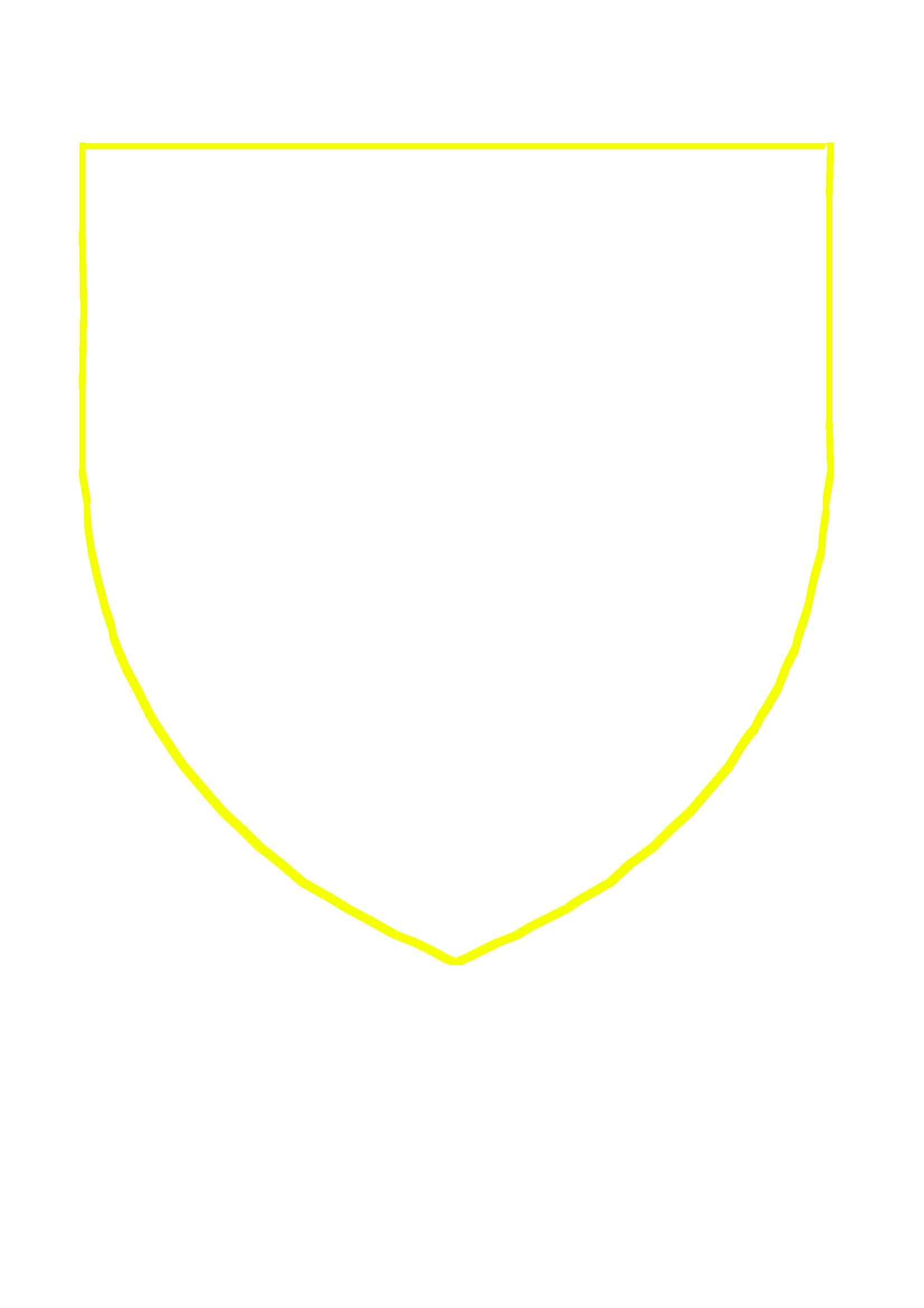is officially described
| "Sable a cross silver with the cross of an archbishop surmounted by a pall gold in the first quarter and a lily with its leaves silver in the second quarter." |
- "Sable" means black, so the background of the shield is black. That might be because Augustine was a Benedictine monk.
- "A cross silver" is the big white cross which divides the shield into four parts - which are, sensibly enough, called "quarters".
- "In the first quarter", which is the top left quarter, there is :
- "the cross of an archbishop" - that's the little gold cross sticking out at the top and bottom of the big Y shape. That's there to emphasise that Augustine was an archbishop - a bishop's cross is rather different. It's behind the Y because it's
- "surmounted by"
- "a pall" - which is the Y shape. "Pall" is English for the Latin "pallium", which is a vestment awarded to bishops and archbishops by the Pope. The bottom of the pall is fringed, as is appropriate to an archbishop.
- "gold" - defines the colour, and appears to apply both to the pall and the archbishop's cross.
- "In the second quarter", at the top right, there is :
- "a lily" - the large group of three 'petals' -
- "with its leaves" - the seven U-shaped bits -
- "silver" - white.
No one seems to know why there's a lily; an apparently popular view is that it's because Augustine died in May, which is the month of Mary, and the lily is associated with Mary.
We have drawn the shield itself as a simple "heater" shape. This is the classical shape, and seems appropriate to the very early date. The only example we found on the internet is a rather more elaborate shape. ( That "example" is a biggish pdf file; the St Augustine shield is on page 2. ) Similarly, we've used a version of the classical shape of the lily and the leaves, encouraged by comments such as this one.
Our version
The "lily" is a fleur-de-lis, rather than a "natural" lily. The fleur-de-lis was the first sort we found, and seems to be the traditional variety in heraldry, with lots of plausible ecclesiastical connections.
We found nothing very helpful about the leaves. ( We did find one reference - now lost - which suggested that "leaves" might in fact mean "petals", but as we didn't find it until we'd installed the leaves we ignored it. ) We used seven leaves because it looked about right. Reviewing the design at leisure after the event, it seems not unlikely that the leaves we've used represent leaves of water lilies rather than real ones, but by then it was too late - and we can always insist that we were merely following precedent - or we can claim that the remark from that site, "The seven lily leaves represent the seven old Frisian 'zeelanden'", supports a connection with New Zealand.
It looks like this :
Do-it-yourself kit

| 
|
( Click on any picture for a jpeg version. )
